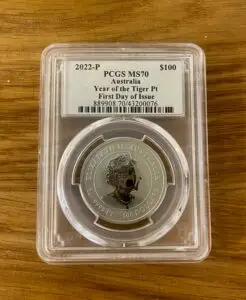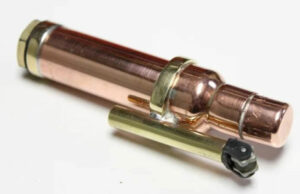The Role of Digital Currencies and Blockchain Technology in Transforming the way Precious Metals are Bought and Sold
Let’s begin with a personal story – 2 months ago I sold pure platinum to one of my clients in Israel. The deal was made in USD, meaning the money goes from his bank through an intermediary bank in Germany. The client sent me a SWIFT code to confirm his payment, yet, after a few days of waiting, I realized that the money had not been credited in my account. The client confirmed with his bank that they transferred the money, and we began a journey to figure out what went wrong.
To make a long story short, it turned out that the intermediary bank had confused our business (Israeli company ) with a Russian company that is currently under sanctions, and confiscated the funds!…… It then took over 2 weeks and lots of documents before they released the funds.
With digital money this would not have happened!!!!!
The precious metals industry has always been a bastion of traditional finance, with a focus on physical assets like gold, silver, platinum, and palladium. However, the advent of digital currencies and blockchain technology has revolutionized the way these metals are bought and sold, leading to significant transformations in the industry.
Digital currencies, or cryptocurrencies, are decentralized, digital currencies that use encryption techniques to secure transactions and to control the creation of new units. They allow users to send and receive payments without the need for intermediaries like banks, and are not tied to any government or central authority. This makes them a perfect fit for the precious metals industry, where buyers and sellers often seek privacy and security when conducting transactions.
One of the most significant advantages of digital currencies in the precious metals industry is their ability to offer faster and cheaper transactions. Traditionally, buying and selling precious metals involved intermediaries such as banks and brokers, which added costs and time to the transaction process. With digital currencies, transactions can be completed in a matter of minutes, without any intermediaries, leading to faster and more cost-effective trading.
Another key advantage of digital currencies is their ability to offer greater privacy and security in transactions. Precious metals buyers and sellers often require anonymity and confidentiality in their transactions, to protect their assets from potential threats such as theft, fraud, or government seizures. Digital currencies can provide this privacy by allowing transactions to be conducted without disclosing personal information, which can help protect against these threats.
Blockchain technology, the underlying technology behind cryptocurrencies, is also transforming the way precious metals are bought and sold. Blockchain is a decentralized, distributed ledger technology that records transactions on a tamper-proof and transparent network. It allows for the creation of digital assets that can be tracked and traded securely and transparently, without the need for intermediaries.
One of the primary benefits of blockchain technology in the precious metals industry is the ability to create digital tokens that represent physical assets like gold, silver, or other precious metals. These tokens can be used to represent ownership of the physical asset, allowing for more efficient trading and greater liquidity in the market. They also allow for fractional ownership of physical assets, enabling more investors to participate in the market and increasing the accessibility of precious metals investments.
(For more info about tokens backed 100% by precious metals you can check out Aurus Technology, which is a leader in the industry).
Another advantage of blockchain technology is its ability to offer greater transparency in the supply chain of precious metals. Precious metals are often mined in developing countries with weak regulatory frameworks, leading to concerns over ethical and sustainable sourcing. Blockchain technology can be used to track the entire supply chain of precious metals, from mining to refining to distribution, providing greater transparency and accountability in the industry.
However, there are also some challenges and limitations to the use of digital currencies and blockchain technology in the precious metals industry. One of the primary concerns is the lack of regulation and standardization in the market, which can lead to potential risks for investors. Digital currencies are still a relatively new and untested asset class, with a high degree of volatility and uncertainty. There is also a lack of clarity over how digital currencies and blockchain technology will be regulated in the future, which can create uncertainty and confusion in the market.
In conclusion, digital currencies and blockchain technology are transforming the way precious metals are bought and sold, offering greater efficiency, security, and transparency in the industry. However, there are also challenges and limitations to their use, and it is important for investors and market participants to remain vigilant and informed about the risks and opportunities in this rapidly evolving industry. With the right regulatory framework and technological innovations, the future of the precious metals industry looks bright and promising.






